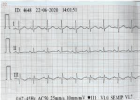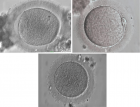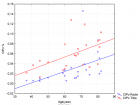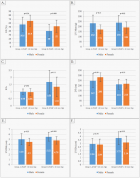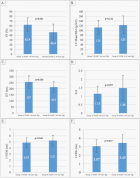Figure 1
The Role of Mitochondria in Chronic Wound Healing (Mitotherapy): Signaling and Therapeutic Implications
Seyedeh Sara Azadeh* and Hoda Keshmiri Neghab
Published: 31 January, 2025 | Volume 9 - Issue 1 | Pages: 001-009
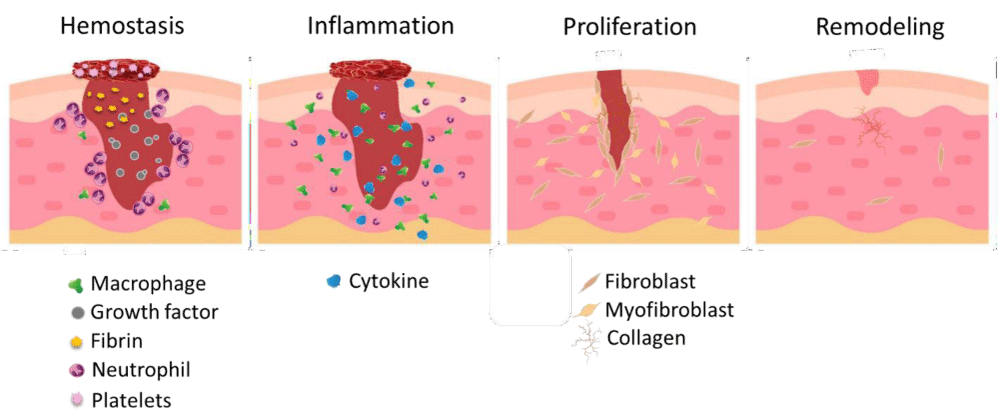
Figure 1:
The wound healing process. These stages are hemostasis, which occurs within hours after the injury. Inflammation, lasting from 1 to 3 days post-injury. Proliferation, spanning from 4 to 21 days. Tissue repair can last from approximately 21 days up to a year. In the hemostasis phase, inflammatory cells, growth factors, and fibrin gather at the wound site, leading to clot formation and blood vessel constriction. During the inflammation phase, additional immune cells are activated, serving as immune responders and producing growth factors. In the proliferation phase, re-epithelialization takes place, along with the growth of new blood vessels and granulation tissue. Finally, in the remodeling phase, the wound undergoes contraction, resulting in the formation of scar tissue [21].
Read Full Article HTML DOI: 10.29328/journal.abb.1001043 Cite this Article Read Full Article PDF
More Images
Similar Articles
-
The Bacterial Heterotrimeric Amidotransferase GatCAB: functions, structures and mechanism-based inhibitorsVan Hau Pham*,Jacques Lapointe. The Bacterial Heterotrimeric Amidotransferase GatCAB: functions, structures and mechanism-based inhibitors. . 2017 doi: 10.29328/journal.hjb.1001003; 1: 021-032
-
The Role of Mitochondria in Chronic Wound Healing (Mitotherapy): Signaling and Therapeutic ImplicationsSeyedeh Sara Azadeh*,Hoda Keshmiri Neghab. The Role of Mitochondria in Chronic Wound Healing (Mitotherapy): Signaling and Therapeutic Implications. . 2025 doi: 10.29328/journal.abb.1001043; 9: 001-009
Recently Viewed
-
Investigation of Stain Patterns from Diverse Blood Samples on Various SurfacesSonia Rajkumari*. Investigation of Stain Patterns from Diverse Blood Samples on Various Surfaces. J Forensic Sci Res. 2024: doi: 10.29328/journal.jfsr.1001061; 8: 028034
-
Anxiety and depression as an effect of birth order or being an only child: Results of an internet survey in Poland and GermanyJochen Hardt*,Lisa Weyer,Malgorzata Dragan,Wilfried Laubach. Anxiety and depression as an effect of birth order or being an only child: Results of an internet survey in Poland and Germany. Insights Depress Anxiety. 2017: doi: 10.29328/journal.hda.1001003; 1: 015-022
-
Pharmacovigilance is Important for Assessments of Drugs, and Withdrawal of the Drugs that have Adverse Effects More than The Benefits of Their TreatmentRezk R Ayyad,Yasser Abdel Allem Hassan,Ahmed R Ayyad*. Pharmacovigilance is Important for Assessments of Drugs, and Withdrawal of the Drugs that have Adverse Effects More than The Benefits of Their Treatment. Arch Pharm Pharma Sci. 2025: doi: 10.29328/journal.apps.1001069; 9: 042-045
-
The Impact of Artificial Intelligence on the Daily Responsibilities of Family Doctors: A Comprehensive Review of Current KnowledgeAdawi Mohammad*,Awni Yousef. The Impact of Artificial Intelligence on the Daily Responsibilities of Family Doctors: A Comprehensive Review of Current Knowledge. J Community Med Health Solut. 2025: doi: 10.29328/journal.jcmhs.1001061; 6: 067-076
-
Forensic Psychology and Criminal ProfilingEze SM*,Alabi KJ,Yusuf AO,Hamzat FO,A Abdulrauf,Atoyebi AT,Lawal IA,OA Ibrahim,AY Imam-Fulani,Dare BJ. Forensic Psychology and Criminal Profiling. J Forensic Sci Res. 2025: doi: 10.29328/journal.jfsr.1001085; 9: 092-096
Most Viewed
-
Feasibility study of magnetic sensing for detecting single-neuron action potentialsDenis Tonini,Kai Wu,Renata Saha,Jian-Ping Wang*. Feasibility study of magnetic sensing for detecting single-neuron action potentials. Ann Biomed Sci Eng. 2022 doi: 10.29328/journal.abse.1001018; 6: 019-029
-
Evaluation of In vitro and Ex vivo Models for Studying the Effectiveness of Vaginal Drug Systems in Controlling Microbe Infections: A Systematic ReviewMohammad Hossein Karami*, Majid Abdouss*, Mandana Karami. Evaluation of In vitro and Ex vivo Models for Studying the Effectiveness of Vaginal Drug Systems in Controlling Microbe Infections: A Systematic Review. Clin J Obstet Gynecol. 2023 doi: 10.29328/journal.cjog.1001151; 6: 201-215
-
Prospective Coronavirus Liver Effects: Available KnowledgeAvishek Mandal*. Prospective Coronavirus Liver Effects: Available Knowledge. Ann Clin Gastroenterol Hepatol. 2023 doi: 10.29328/journal.acgh.1001039; 7: 001-010
-
Causal Link between Human Blood Metabolites and Asthma: An Investigation Using Mendelian RandomizationYong-Qing Zhu, Xiao-Yan Meng, Jing-Hua Yang*. Causal Link between Human Blood Metabolites and Asthma: An Investigation Using Mendelian Randomization. Arch Asthma Allergy Immunol. 2023 doi: 10.29328/journal.aaai.1001032; 7: 012-022
-
An algorithm to safely manage oral food challenge in an office-based setting for children with multiple food allergiesNathalie Cottel,Aïcha Dieme,Véronique Orcel,Yannick Chantran,Mélisande Bourgoin-Heck,Jocelyne Just. An algorithm to safely manage oral food challenge in an office-based setting for children with multiple food allergies. Arch Asthma Allergy Immunol. 2021 doi: 10.29328/journal.aaai.1001027; 5: 030-037

HSPI: We're glad you're here. Please click "create a new Query" if you are a new visitor to our website and need further information from us.
If you are already a member of our network and need to keep track of any developments regarding a question you have already submitted, click "take me to my Query."






